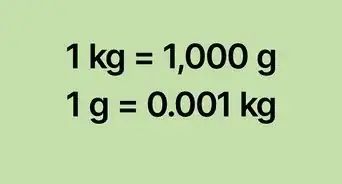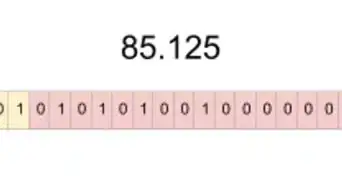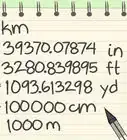This article was co-authored by wikiHow Staff. Our trained team of editors and researchers validate articles for accuracy and comprehensiveness. wikiHow's Content Management Team carefully monitors the work from our editorial staff to ensure that each article is backed by trusted research and meets our high quality standards.
There are 7 references cited in this article, which can be found at the bottom of the page.
This article has been viewed 1,096,517 times.
Learn more...
This article will explain how to convert binary (base 2) to hexadecimal (base 16). Whether it is for coding, for math class, or for The Martian, hexadecimal is a useful and powerful shortcut when writing long binary strings. Since both bases are powers of 2, this procedure is much simpler than general conversions such as converting decimal to binary. All you need are basic adding and counting skills to make turn a binary number into hexadecimal.
Steps
Sample Converter
Making Basic Conversions
-
1Find a line of up to four binary numbers to convert. Binary numbers can only be 1 and 0. Hexadecimal numbers can be 0-9, or A-F, since hexadecimal is base-16. You can convert any binary string to hexadecimal (1, 01, 101101, etc.), but you need four numbers to make the conversion (0101→5; 1100→C, etc.). For this lesson, start with the example 1010.
- 1010
- If you don't have 4 digits, add zeros to the front to make it four digits. So, 01 would become 0001.[1]
-
2Write a small "1" above the last digit. Each of the four numbers signifies a type of number decimal system number. The last digit is the one's place. You will make sense of the rest of the digits in the next step. For now, write a small one above the last digit.[2]
- 1010
- Note that you are not raising anything to any power -- this is just a way to see what digit means what.
Advertisement -
3Write a small "2" above the third digit, a "4" above the second, and an "8" above the first. These are the rest of your place holders. If you're curious, this is because each digit represents a different power of 2. The first is , the second , etc.
- 1010
- . If the length is less than 4, then you need to add zeros on the left and make a number four digits long.[3]
-
4Count out how many of each "place" you have. Luckily, this conversion is easy once you have four numbers and know what they all mean. If you have a one in the first number, you have one eight. If you have a zero in the second column, you have no fours. The third column tells you how many twos, and the second how many ones. So, for our example:[4]
- 1010
- 8 0 2 0
-
5Add your four numbers together. Once you have your new hexadecimal numbers, simply add them up.[5]
- 1010
- 8 0 2 0
- Final answer: The binary number 1010 converts to A in the hexadecimal system.
-
6Change any number above "9" into a letter. This is so you don't get confused when reading hexadecimal ("is that a 1 and a 5, or a 15?"). Luckily, the system is super easy, since you can't have a hexadecimal number bigger than 15. Simply start the alphabet with 10, so that:[6]
-
7Try a few examples to get better at converting. The following examples have answers in white beneath them. To see the work and the answers, highlight the area under the question by clicking and dragging your mouse over it.
- Convert 1 to hexadecimal.
- Add zeros to get four digits: 0001
- Find your place holders:
- Add up the digits:
- Final answer: 1
- Convert 0101 to hexadecimal.
- Add zeros to get four digits: 0101
- Find your place holders:
- Add up the digits:
- Final answer: 5
- Convert 1110 to hexadecimal.
- Add zeros to get four digits: 1110
- Find your place holders:
- Add up the digits:
- Final answer: E
- Convert 1011 to hexadecimal.
- Add zeros to get four digits: 1011
- Find your place holders:
- Add up the digits:
- Final Answer: B
- Convert 1 to hexadecimal.
Converting Long Binary Strings
-
1Cut your string of binary numbers into groups of four, starting from the right. Hexadecimal converts 4 binary digits into one hexadecimal unit. So, in order to convert the number, you first need to break it up into groups of four, starting on the right. For example:
- Convert into a hexadecimal number.
-
2Add extra zeros to the front of the first number if it is not four digits. The zeros will not affect the conversion, but they will make it easier to visualize. Remember, you want all groups of 4-digit binary numbers.[7]
- Convert into a hexadecimal number.
-
3Convert one 4-digit group at a time. You'll need to convert each binary set by itself, so separate them on your paper to make them easier to work with. Work on converting each individual string of four into its hexadecimal counterpart. For our example:[8]
-
4Remove the spaces to create your hexadecimal number. Once you've converted all the 4-digit parts, simply ram them together to get your final answer. So, for the example above:[9]
- 3 B 2 9
-
5Memorize or check a conversion table to see if you got each part right. There are only 16 possible 4-digit combinations of binary numbers. So, if you don't want to figure out each string individually, you can use this conversion table [10] .
Binary Hexadecimal 0 0 1 1 10 2 11 3 100 4 101 5 110 6 111 7 1000 8 1001 9 1010 A 1011 B 1100 C 1101 D 1110 E 1111 F
Community Q&A
-
QuestionHow do I convert 100101 binary to hexadecimal?
 Community AnswerFirst add two leading zeros so that you have enough digits to split into equal 4 bit sections: (00)100101 Now split into two equal 4 bit sections (0010)(0101) Convert each four bit section into their respective hex values: 0010 = 2 0101 = 5 (0010)(0101) = (2)(5) = 25 This should not be confused with the decimal (base 10) value 25.
Community AnswerFirst add two leading zeros so that you have enough digits to split into equal 4 bit sections: (00)100101 Now split into two equal 4 bit sections (0010)(0101) Convert each four bit section into their respective hex values: 0010 = 2 0101 = 5 (0010)(0101) = (2)(5) = 25 This should not be confused with the decimal (base 10) value 25. -
QuestionHow do I convert decimal to octal?
 Community AnswerFirst convert decimal to binary, then into octal. Make 3 pairs of binary numbers from the right side and add zero if needed.
Community AnswerFirst convert decimal to binary, then into octal. Make 3 pairs of binary numbers from the right side and add zero if needed. -
QuestionHow do I convert hexadecimal to binary?
 Community AnswerFirst convert the given hexadecimal into the decimal system. The decimal can then be converted to binary.
Community AnswerFirst convert the given hexadecimal into the decimal system. The decimal can then be converted to binary.
Warnings
- If you are finding a hex equivalent to a binary-encoded address and if you do this wrong, the results in hex-encoded address inputs will be messed up.⧼thumbs_response⧽
References
- ↑ http://www.binaryhexconverter.com/binary-to-hex-converter
- ↑ https://www.khanacademy.org/math/pre-algebra/applying-math-reasoning-topic/alternate-number-bases/v/binary-to-hexadecimal
- ↑ https://binarytotext.net/binary-to-hexadecimal/
- ↑ http://www.rapidtables.com/convert/number/how-binary-to-hex.htm
- ↑ https://www.cuemath.com/numbers/binary-to-hexadecimal/
- ↑ https://www.bbc.co.uk/bitesize/guides/zd88jty/revision/5
- ↑ https://www.bbc.co.uk/bitesize/guides/zd88jty/revision/5
- ↑ https://www.mathsisfun.com/binary-decimal-hexadecimal-converter.html
- ↑ https://www.bbc.co.uk/bitesize/guides/zd88jty/revision/5
About This Article
To convert binary to hexadecimal, start by finding a line of 4 binary numbers that you want to convert. Then, write a 1 above the last digit, a 2 above the third digit, a 4 above the second digit, and an 8 above the first digit. Next, use the binary digits to determine how many of each number above them there are. For example, if the first digit in the line of binary is 0, then you would have no eights, since 8 is written above the first digit. Once you know how many of each number you have, add all 4 numbers together to get the hexadecimal conversion. If you want to learn how to memorize when to change numbers into letters for a hexadecimal conversion, keep reading!
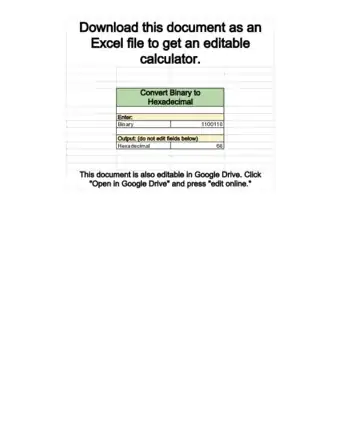
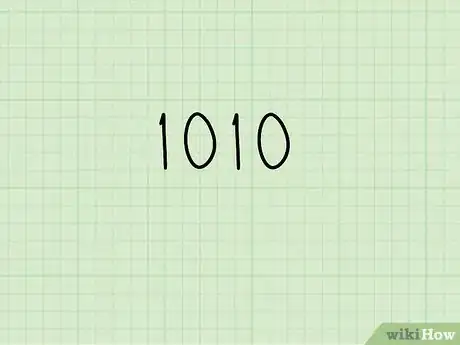


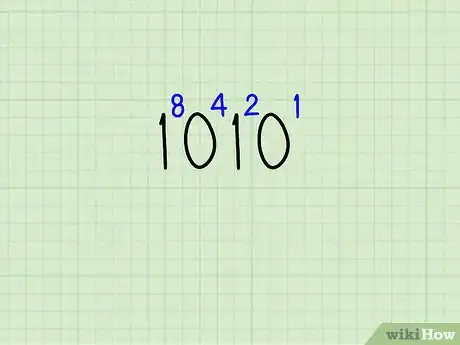



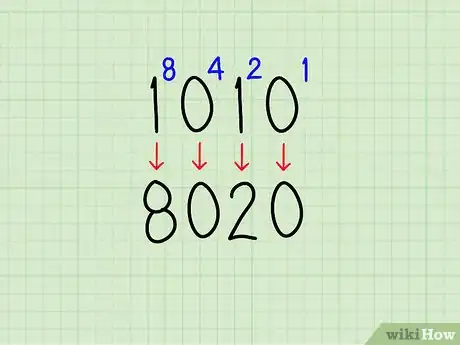


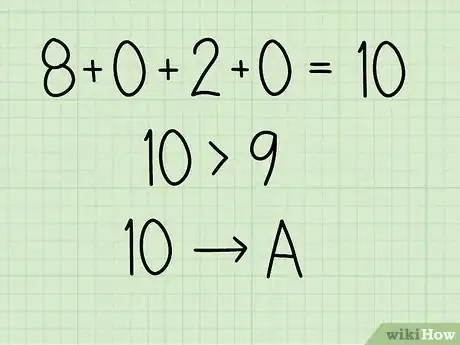






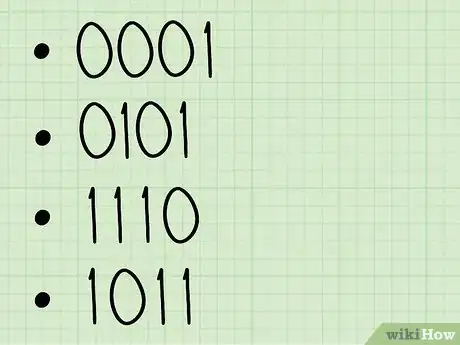











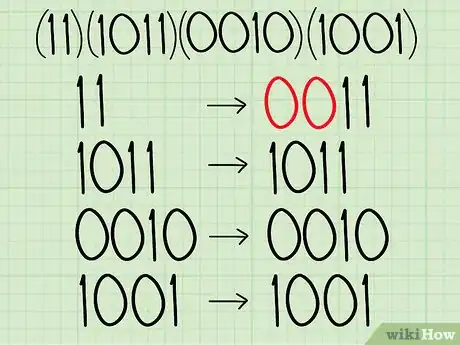


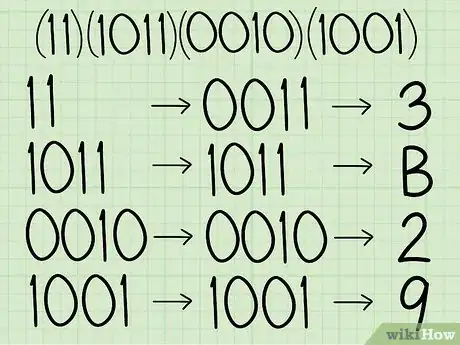







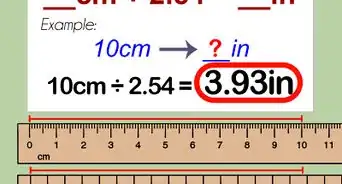
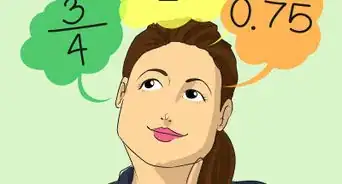
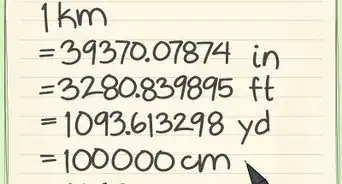
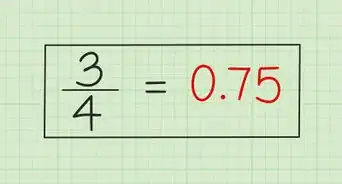
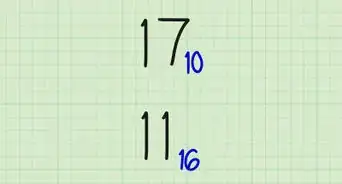
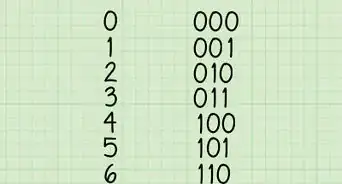
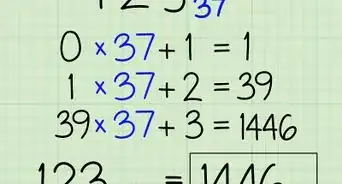
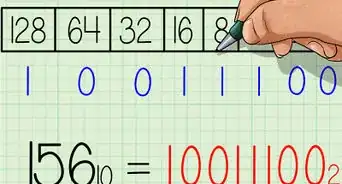
-to-Grams-(g)-Step-8-Version-5.webp)
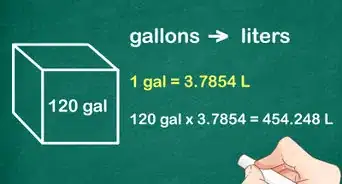

-to-Fahrenheit-(°F)-Step-6-Version-2.webp)
